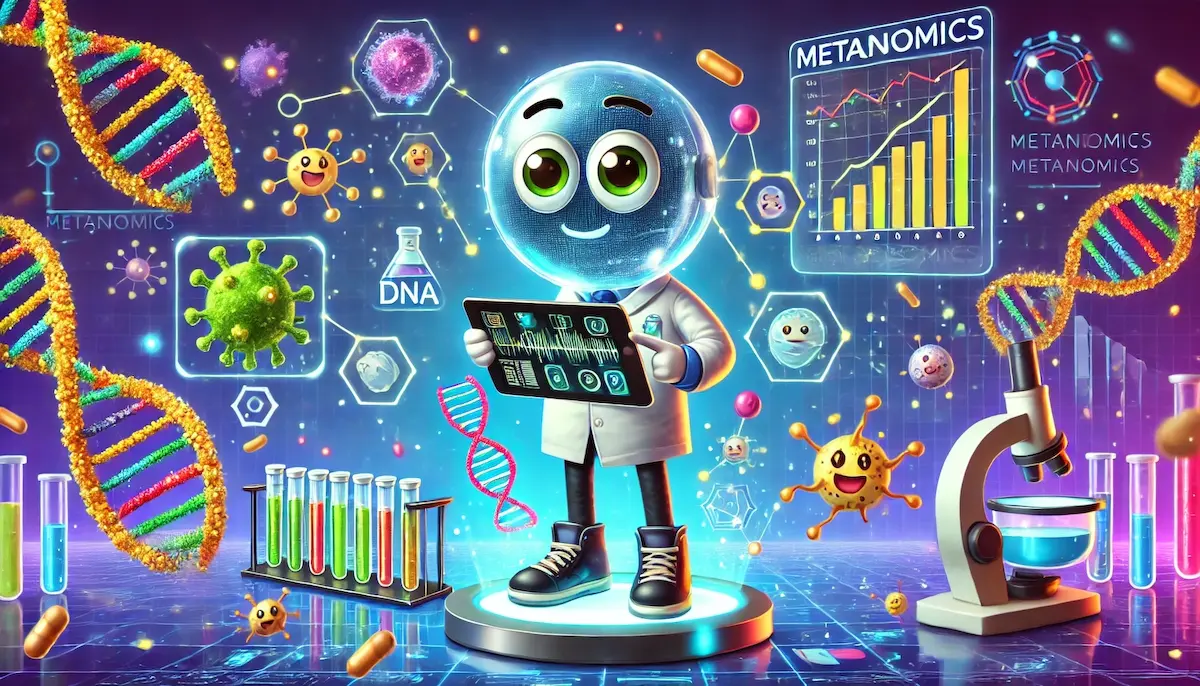Metagenomics is a cutting-edge field of study that involves analyzing the genetic material of entire communities of microorganisms directly from their natural environments. Unlike traditional microbiology, which often focuses on isolating and studying individual species, metagenomics examines the collective genomes (metagenome) of all the microbes in a given sample, providing a comprehensive view of the microbial ecosystem. This approach has revolutionized our understanding of the microbial world, uncovering the vast diversity and functions of microorganisms in environments ranging from the human gut to the deep ocean.
The Basics of Metagenomics
At its core, metagenomics involves the extraction and sequencing of DNA from a sample that contains multiple species of microorganisms. These samples can be collected from various environments, such as soil, water, the human body, or even extreme habitats like hydrothermal vents. The extracted DNA is then analyzed using high-throughput sequencing technologies, which generate massive amounts of data that are processed and assembled into metagenomes.
The key steps in a metagenomics study include:
- Sampling: Collecting samples from the environment of interest. This could be soil, seawater, or a swab from the human skin.
- DNA Extraction: Isolating the total DNA from the sample, which includes genetic material from all the microorganisms present.
- Sequencing: Using next-generation sequencing technologies to read the DNA sequences of the sample. This process generates millions of short DNA fragments.
- Data Analysis: Assembling the DNA fragments into longer sequences, identifying genes, and determining the taxonomic composition of the microbial community. Bioinformatics tools are used to analyze this data, helping to identify the species present and predict their potential functions.
Applications of Metagenomics
Metagenomics has a wide range of applications across various fields, making it an invaluable tool for advancing science and technology:
Understanding Microbial Diversity
One of the primary uses of metagenomics is to explore the vast diversity of microorganisms in different environments. Traditional methods often miss many microbes that cannot be cultured in the lab, but metagenomics allows scientists to study these “unculturable” organisms by analyzing their DNA directly from the environment. This has led to the discovery of countless new species and has significantly expanded our understanding of the microbial world.
Human Health and Medicine
In medicine, metagenomics is used to study the human microbiome—the community of microorganisms that live on and inside our bodies. The human gut microbiome, in particular, has been a focus of intense research due to its crucial role in digestion, immunity, and overall health. Metagenomic studies have linked imbalances in the gut microbiome to various conditions, including obesity, diabetes, inflammatory bowel disease, and even mental health disorders. This research is paving the way for new diagnostic tools and treatments based on modulating the microbiome.
Metagenomics is also being used in infectious disease research to identify pathogens in clinical samples. By sequencing all the DNA in a sample, metagenomics can detect known pathogens and discover new ones, offering a powerful tool for diagnosing infections and tracking disease outbreaks.
Environmental Science
In environmental science, metagenomics is used to study microbial communities in ecosystems ranging from oceans to soils. These microbes play critical roles in processes like carbon cycling, nutrient recycling, and biodegradation. By understanding the functions of these microbial communities, scientists can develop strategies to address environmental challenges, such as pollution and climate change.
For example, metagenomics can be used to identify microbes that can break down pollutants in contaminated soils or water, leading to the development of bioremediation strategies. Additionally, studying microbial communities in extreme environments can reveal how life adapts to harsh conditions, providing insights into the potential for life on other planets.
Biotechnology and Industrial Applications
Metagenomics is also driving innovation in biotechnology. By exploring the genetic diversity of microbes in various environments, scientists can discover new enzymes, metabolic pathways, and bioactive compounds with potential industrial applications. These discoveries can lead to the development of new pharmaceuticals, biofuels, and environmentally friendly chemicals.
The Future of Metagenomics
The future of metagenomics is bright, with ongoing advancements in sequencing technologies and computational tools opening new possibilities for research. Single-cell genomics, for example, is allowing scientists to study the genomes of individual microbes within a community, providing even more detailed insights into their roles and interactions.
As our understanding of microbial communities deepens, metagenomics will continue to play a crucial role in fields like medicine, environmental science, and biotechnology. The integration of metagenomics with other “omics” approaches, such as proteomics and metabolomics, will provide a more comprehensive view of microbial ecosystems and their impact on the world around us.
Blockfine thanks you for reading and hopes you found this article helpful.
